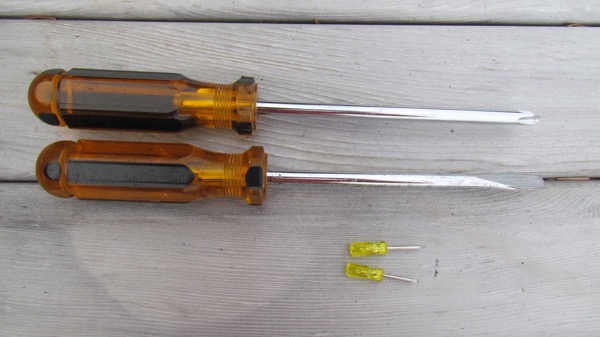A while ago, Sam Schipani of Hello Homestead asked me for a list of essential homestead tools for this article she subsequently wrote.
My reply seemed like a worthy blog post.
In no particular order, here’s a sampling of the most essential tools on the Zeiger Family Homestead:
A good pocket knife!: even though I didn’t intend to rank these, the first tool I thought of is probably the most important. I carry a camp (a.k.a. Boy Scout) folder pocket knife every single day—for so long, and so faithfully now, that the bale rivet has worn down so much that the bale’s coming loose, and the razor-thin head is cutting holes in my pocket linings!
The best homestead tool is the one you have on hand when you need it. I always make sure my pocket knife is on hand (see Constant Companion).
A good set of kitchen knives: I confess, it took me a bit to realize I should include this. Cooking and other food prep, is, of course, a primary job on the homestead, and the right knife set for the job is a must. My preference is high carbon steel. Harder to maintain (yet oh, so rewarding to do so!) they hold an edge better, and, I think look better in the cabin (see High Carbon Steel Kitchen Knives).
A splitting ax: arguably, can a homestead really be called such if it isn’t heated by wood? I own many axes, but I chose a single one, a splitting ax, because it can do the job of just about any ax (including limbing/felling or construction, both of which I’d ideally sharpen differently). But, splitting wood is the primary ax job on this homestead (see Choosing the Right Ax for the Job).
A dependable headlamp: No matter a homestead’s power system, dark corners exist, and darkness falls at the end of each and every day. Hands-free light is, in my opinion, essential (see Headlamps: Don’t Leave Home Without Them!).
As for tools that one would carry in a toolbox:
A set of socket wrenches: vital for electrical systems, but also versatile. Mine has a set of driver heads, and a ratcheting, interchangeable handle, so I can do almost everything basic except hammer a nail from that one kit.
Hammer: Off the top of my head, we own 4 claw hammers, and keep a couple of replacement handles. If I have a choice, I prefer to use screws, as they can be more easily removed, but when it comes to fast construction, nothing beats a hammer and nails!
Pry bar: for every nail that goes in, about two seem to need to come out! A good, mid-sized crowbar is a powerful tool.
Screw drivers: despite comments on socket wrenches above, we use screw drivers almost every day. Of course, the range is large, from spectacles drivers on up. Everything from machines, to computers and other electronics, to boats and buildings require screw drivers.
Saws: I have and use carpenter saws, hack saws, and keyhole saws, both manual and electric, but much more often, I use bow saws, even the big two-person saws (a.k.a. Swede saw, misery whip, logger saw, bucking saw, etc.) for cutting fire wood.
N95-N99 or better Dust Mask: In my view, Americans simply don’t take care of their lungs enough! Whether it be wood ash, saw dust, or just plain old dust, we inhale far too many particulates without a second’s thought to how it might effect our health. It’s one thing to homestead, it’s another thing to live long enough to enjoy the lifestyle! I carry foldable N95s in every coat I own (see N95 Dust Masks: Don’t Leave Home Without Them?).
That’s the essentials, as I see them. We own way more tools than these, of course. I made the list mostly thinking, “what do I spend my time looking for most, cussing as I go?” The most useful tools are those that habitually wander from where I put them and know to look for them, as Michelle and Aly use them and forget to put them back.
Upon reading Sam’s article, I realized that I’d forgotten one very important tool. So important, that I’ll feature it in a future post.


